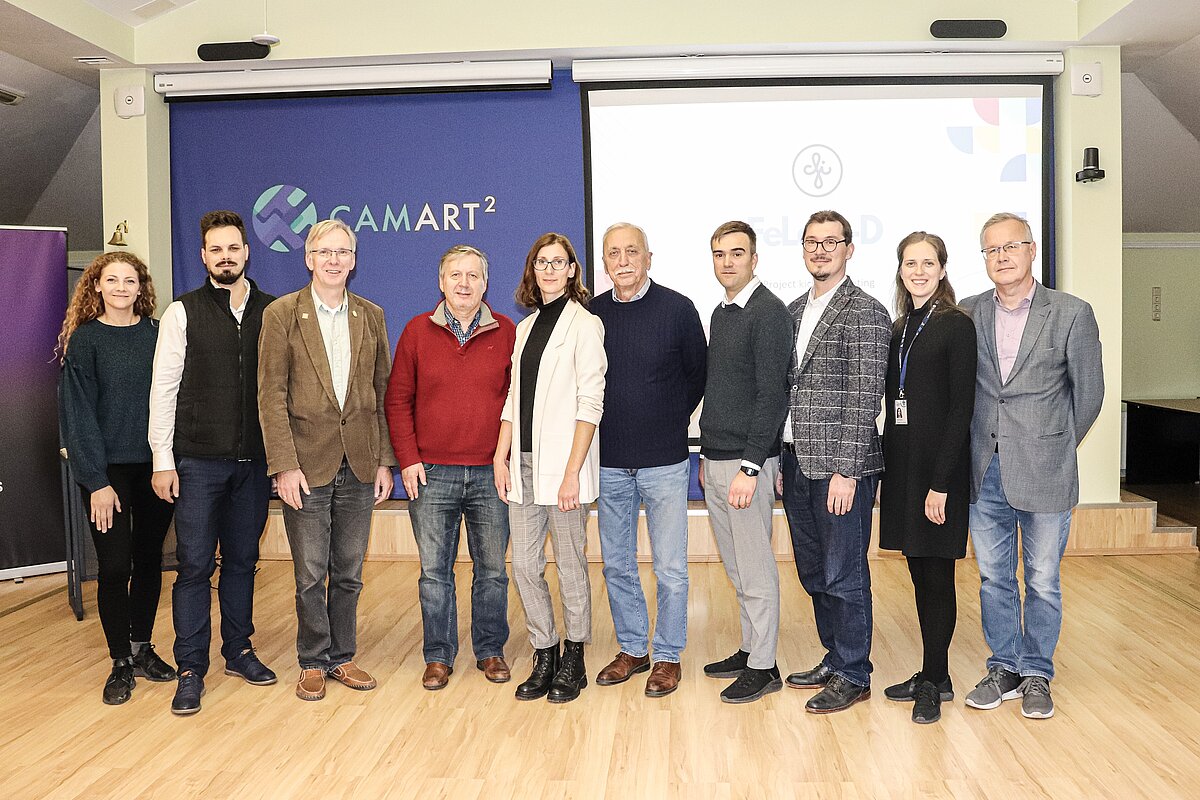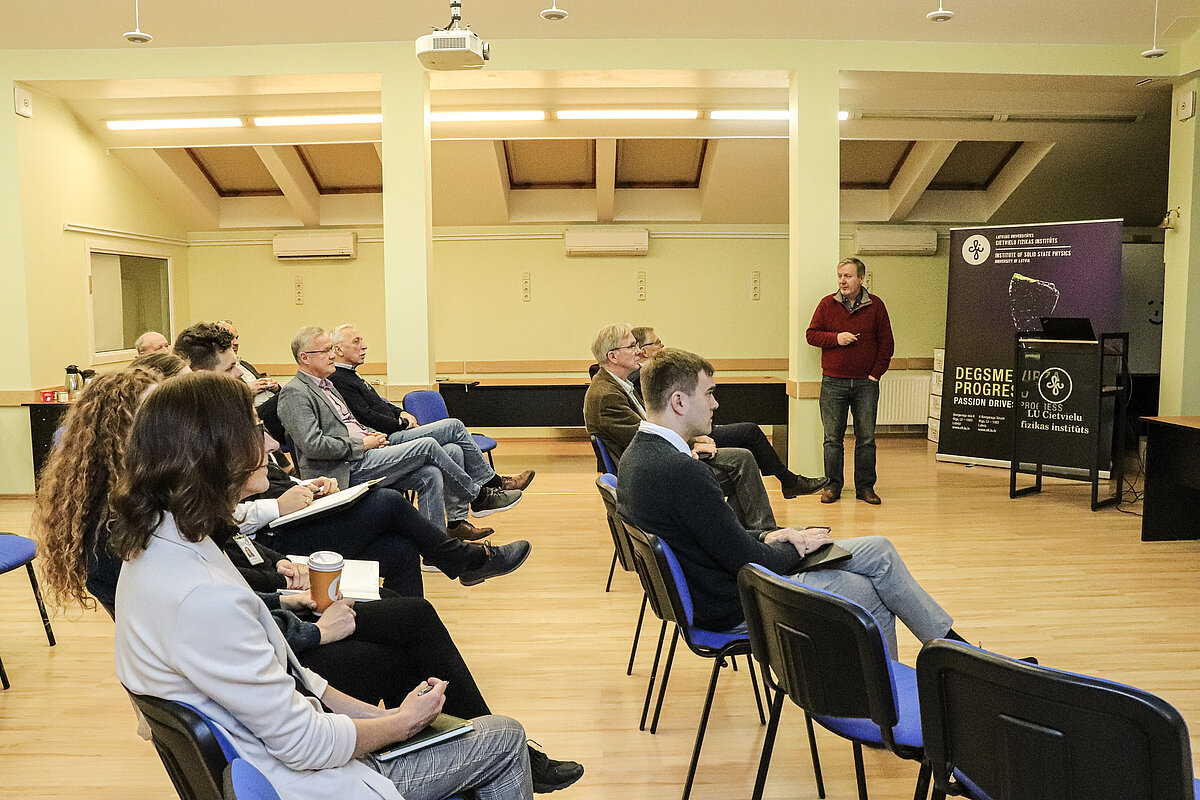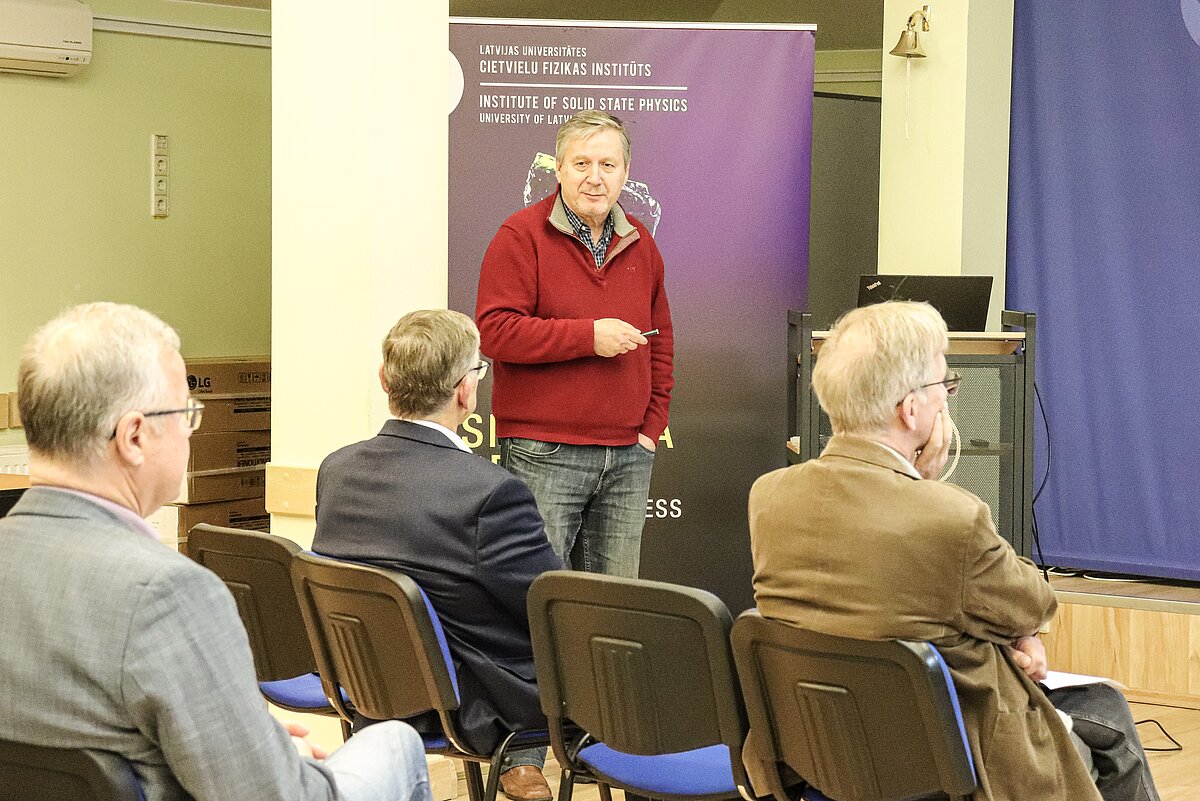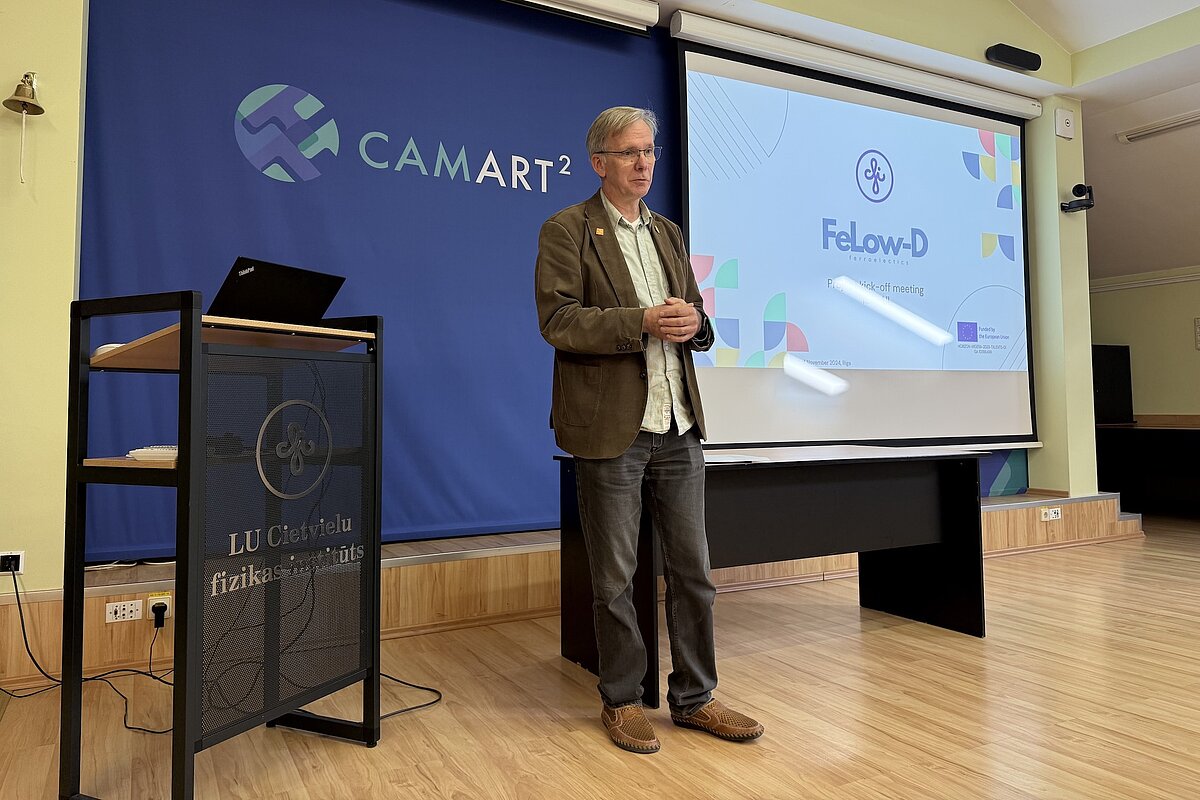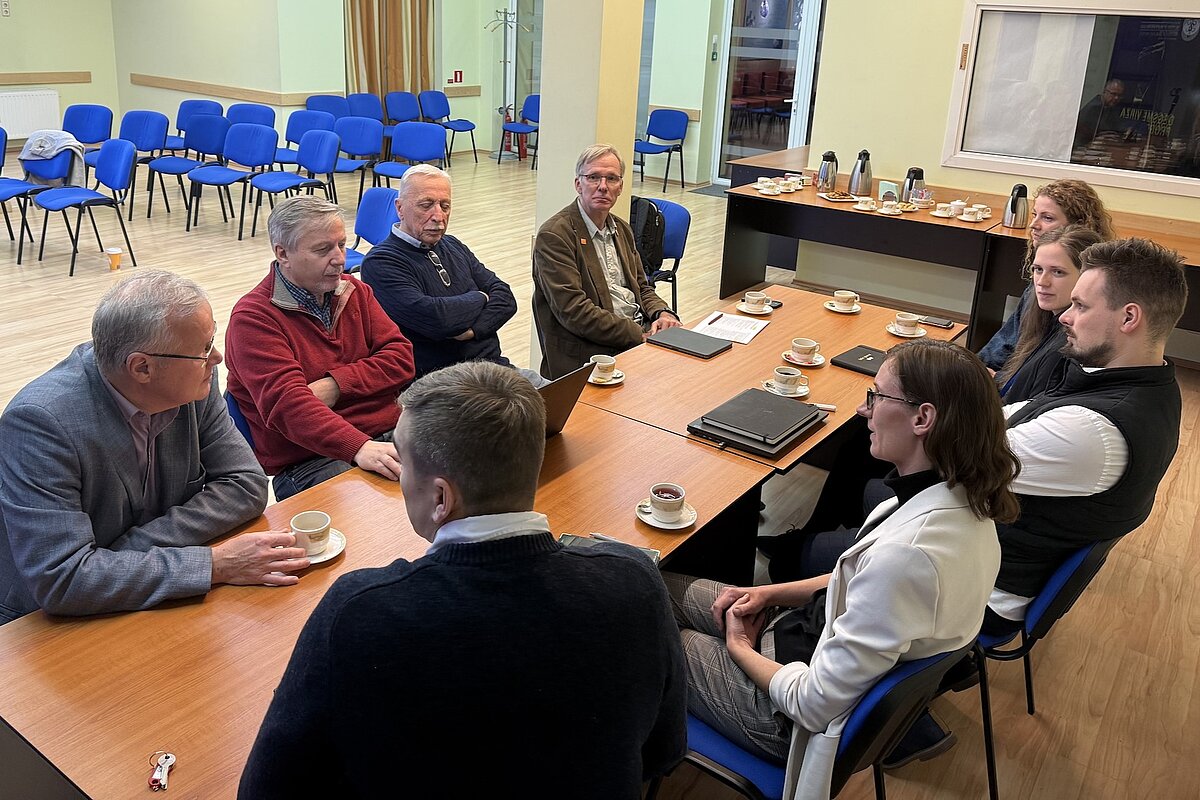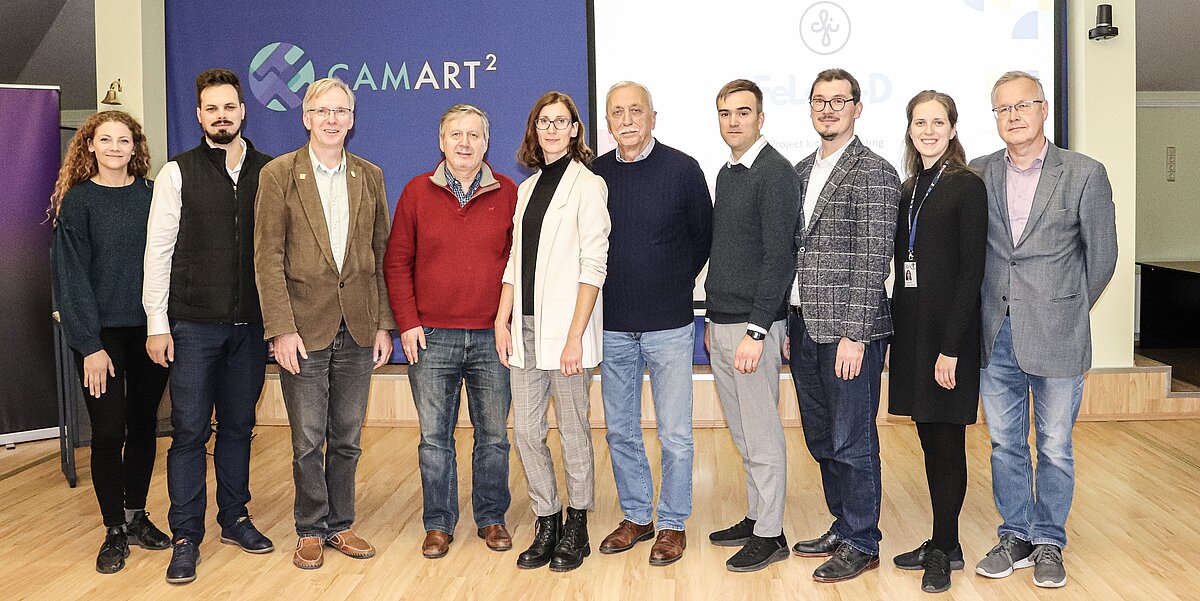
The Institute of Solid State Physics, University of Latvia (ISSP UL) hosted the kick-off meeting for the newly launched EU-funded project, Low-dimensional Ferroelectrics for Advanced Electronics and Biomedical Devices (FeLow-D). The project is a part of the HORIZON-WIDERA-2023-TALENTS-01 program and supported under Grant Agreement 101186499 aims to explore breakthrough applications of low-dimensional ferroelectric materials in advanced electronics and biomedical technologies.
The meeting opened with a welcome speech by ISSP UL Director Dr. Andris Anspoks who highlighted the institute's commitment to fostering collaboration with European research centers and industries. Dr. Anspoks shared his vision of how FeLow-D is integrated into ISSP UL’s project portfolio, creating synergies with ongoing projects, particularly the ERA-Chair project “SWEB” focused on smart windows and advanced coatings.
Following the introduction Dr. Andris Šternbergs, ISSP UL’s Deputy Director for Research, presented the ISSP UL new Research Strategy 2025–2027. Under the slogan “Thinking together is progress and working together is success” the strategy underscores ISSP UL’s mission to address global societal and technological challenges through innovative solutions. Dr. Šternbergs discussed the importance of the role FeLow-D will contribute to advancing the European Research Area, and how the institute’s Open Access infrastructure will provide a foundation for establishing the Ferroelectrics Research Co-creation Centre as a cornerstone of the project.
A highlight of the meeting was the presentation by ERA-Chair holder Dr. Andrei Kholkin, who outlined FeLow-D’s roadmap and strategies to extend the project’s impact beyond the current scope. Dr. Kholkin highlighted the project’s commitment to sustainability, gender equality in STEM, and supporting young researchers. His presentation detailed FeLow-D’s objectives, including preparing new project proposals, publishing Q1 research articles, and creating collaborations with EU and US research groups and industries to bridge the gap between laboratory discoveries and market-ready innovations. A significant focus for the first year of FeLow-D will be set on cutting-edge research into the properties and applications of low-dimensional ferroelectric materials. This includes exploring the piezoelectric properties of van der Waals ferroelectrics, investigating phase stability and polarization switching in ZnO:Mg using ISSP UL’s advanced pulsed laser deposition (PLD) technology, and studying the role of interfaces in shaping the ferroelectric and piezoelectric behavior of 2D materials. The project will also focus on studying 2D dipeptide films, with a particular emphasis on understanding the role of embedded water in their properties. Additionally, researchers will work on developing innovative core-shell magnetoelectric structures. To further enhance progress, the project plans to leverage machine learning and AI tools, aiming to accelerate discoveries and explore new potential applications for ferroelectric materials.
The meeting concluded with a roundtable discussion led by Dr. Aleksejs Zolotarjovs, Head of the ISSP UL’s Laboratory of Optical Materials, focused on the project implementation roadmap. Dr. Eriks Birks, FeLow-D Project Manager, and WP1 Leader, highlighted the importance of the new group’s visibility and project’s dissemination activities. He outlined plans for upcoming seminars and workshops to foster both scientific excellence and enhance administrative capacities, as well as to provide career-boosting opportunities for young researchers.
Stay updated on FeLow-D’s progress by visiting the project website
